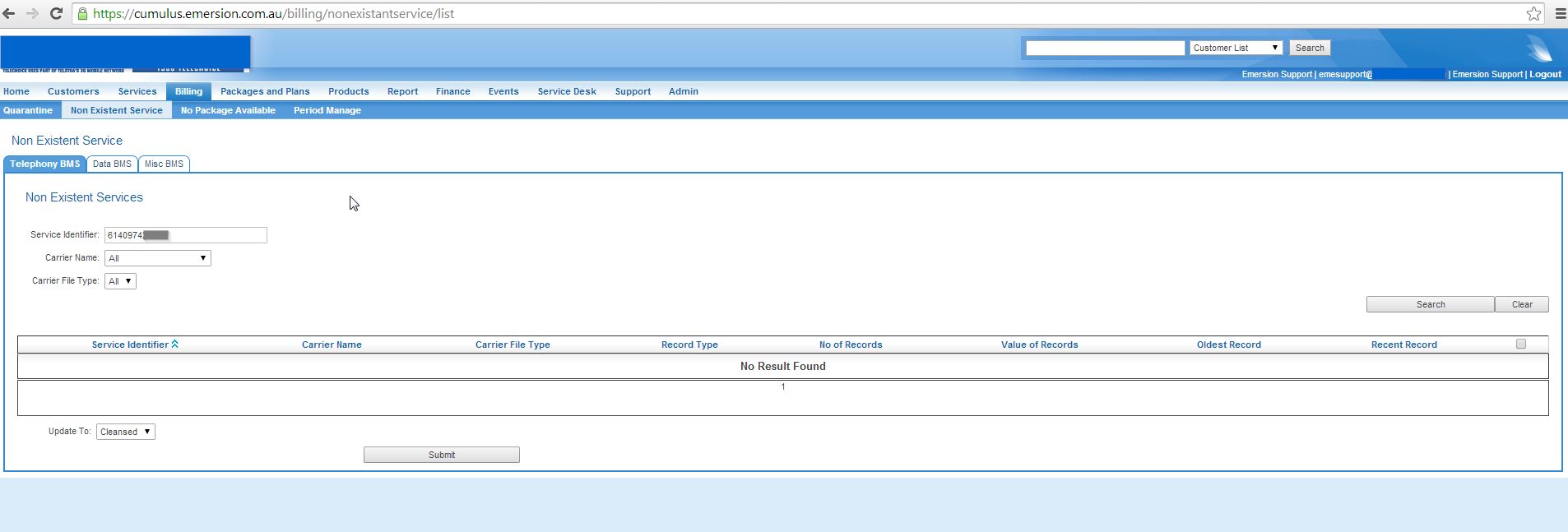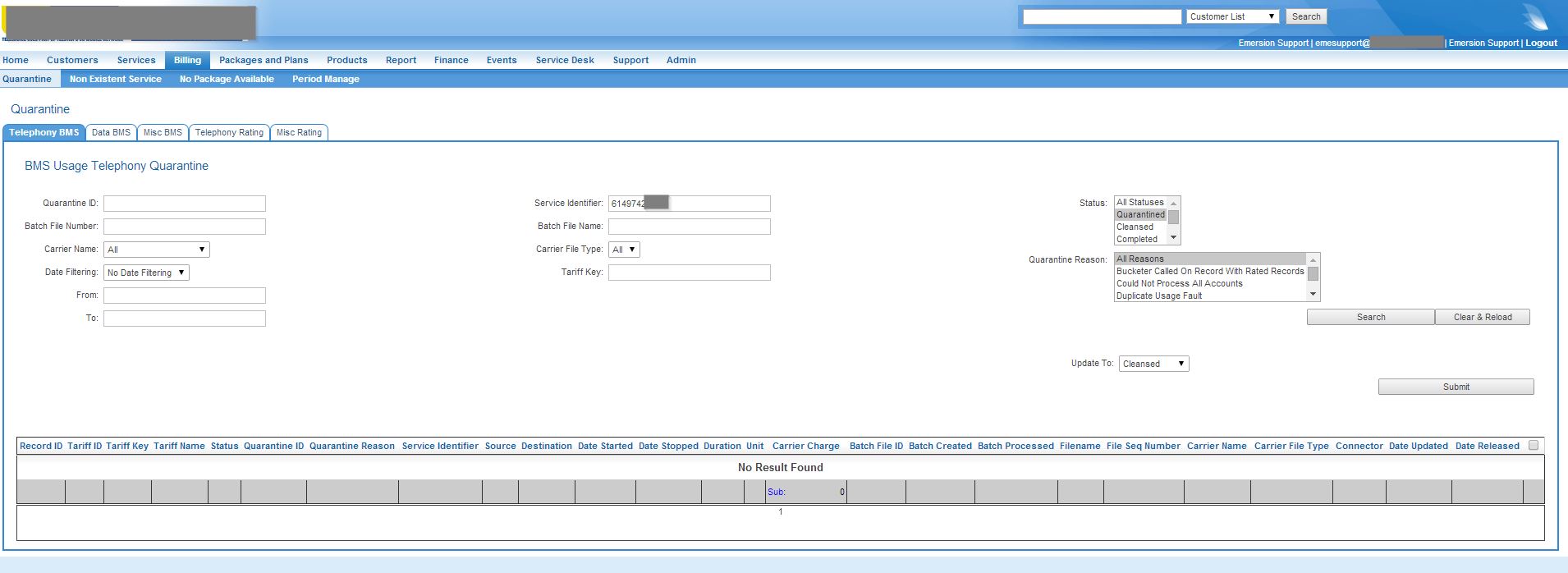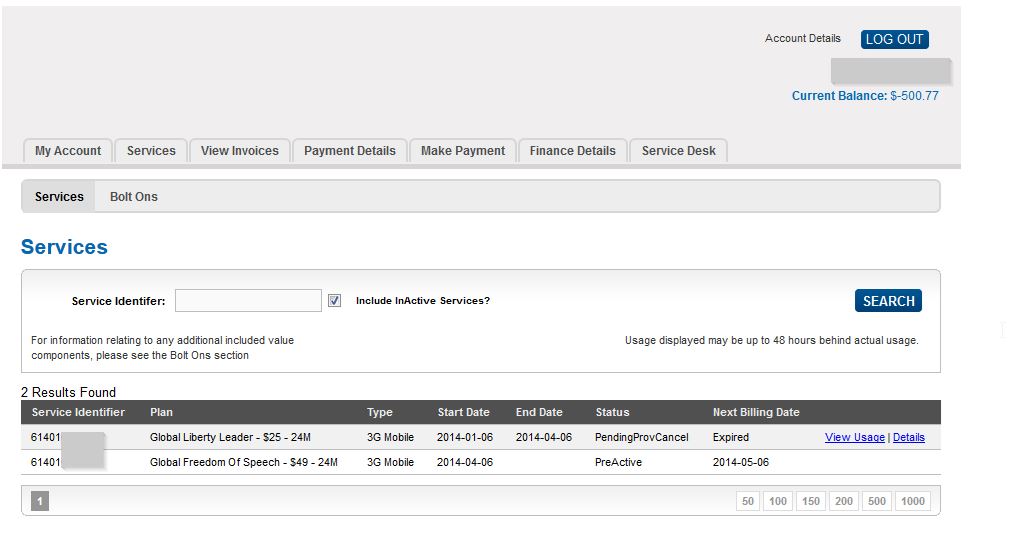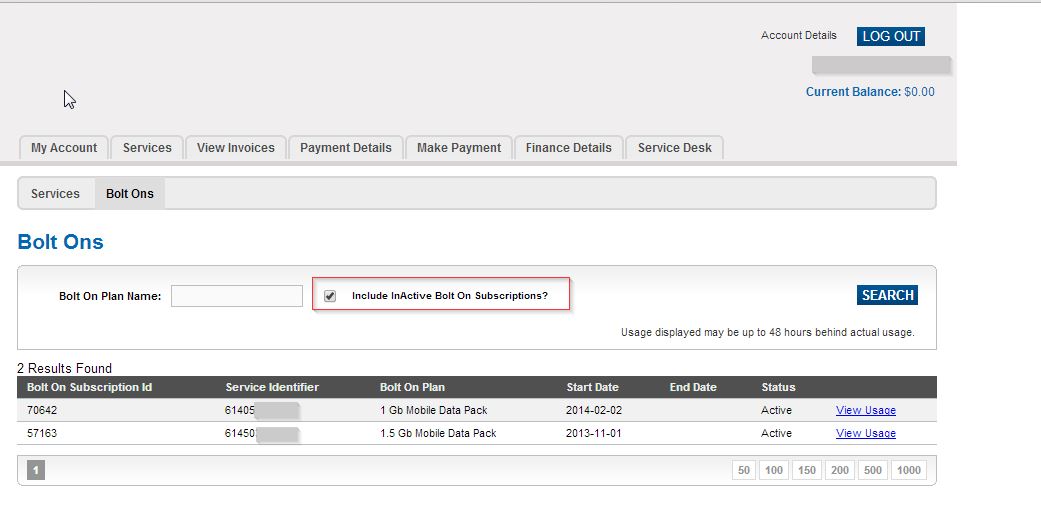Introduction
From time to time, you may encounter instances where usage is either not present, or usage is late. The frame work of usage processing follows the following broad steps.
Usage is received from the carrier in what is commonly known as batch files (Note this can be dependent on service type, some service types do not receive usage through batch files. However it is common for Telstra 3G, Telstra PSTN, and AAPT Rebill)
Batch files are mediated through BMS (Batch Mediation System) and are converted from a file into records in our database
After mediation, records are "bucketed". This means the appropriate service via the service identifier is tracked down in our system so we know where to put usage records. Additionally, other items such as identifying a valid package period associated with the service identifier is carried out this stage.
After the records are bucketed, they are then rated . The system will use the appropriate tariff for the record then record a rated amount, charged amount and invoiced amount.
Finally after successful rating, the usage will be visible against the service subscription.
If usage is not visible against the service identifier, the main reasons are:
Usage has not been received from carrier.
Usage is in bucketer quarantine, or rating quarantined That is to say, usage could not be bucketed or rated.
Usage was successfully bucketed, successfully prepared for rating, but a backlog in rating or some other issue is preventing the records from being rated .
Usage is against an inactive bolton, or a previous subscription if there has been an internal churn or migration.
Troubleshooting steps
Troubleshooting Mediation
The first thing you need to do is to check whether you are receiving usage files from the carrier, and where the usage files are being processed in a timely manner. Run the following report Batch Processing - Usage Telephony Charges (Summary) (if this is not active for you, please contact Emersion Support for activation.
When running this report, be sure to choose only the relevant date range. A broad date range may result in a large report taking a lengthy amount of time to execute.
Look at the file sequence number and the date processed. For a service type such as Telstra 3G Mobile, we would expect a file to be processed every day, and in sequence. If this is the case, you may need to contact Emersion Support for investigation.
If files are being processed, then we know that usage has been received for the carrier, and we have processed whatever they have given us. Note that just because we have received a usage file, it does not mean the carrier has necessarily provided the usage for a given service identifier in this file. They have internal issues and have not released records for a given service.

Troubleshooting Quarantine
As the name suggests, if the records have likely been received and you can't see them, there is a good chance they are in quarantine. Check in the Non Existent Service Section, Telephony BMS, and Telephony Rating in Quarantine. This will give you an idea if they stuck here.


Navigating the UI and end user portal
When looking for usage, remember to check inactive boltons to see if usage is there as pictured below .

Make sure there isn't an old services subscription where a churn or internal migration has occurred. The best way to check this is to go to services -> list all in cumulus, and search via the service identifier (phone number).

A similar setting also is present in the end user portal. Watch out for the "Include Inactive Services", and "Include inactive Bolt On Subscriptions" checkboxes as pictured below.


This category currently contains no pages or media.






